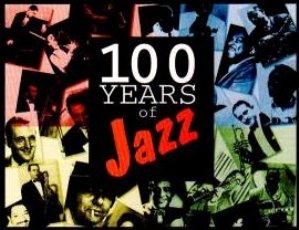100 Years of Jazz - Disc 09: Mainstream - Dixieland Revival (1999)
100 Years of Jazz - Disc 09: Mainstream - Dixieland Revival (1999)

1. Bunk Johnson's Jazz Band – Sobbin' Blues No. 2 (03:52) 2. Bunk Johnson & Turk Murphy and His Band – Careless Love Blues (02:44) 3. Lu Watters Band – Memphis Blues (03:28) 4. Art Hodes' Blue Five – Shake That Thing (03:32) 5. Edmond Hall's Blue Note Jazzmen – Royal Garden Blues (04:08) 6. James P. Johnson's Blue Note Jazzmen – Tishomingo Blues (04:32) 7. Papa Celestin and His New Orleans Jazz Band – High Society (02:52) 8. Turk Murphy Jazz Band – Sidewalk Blues (03:55) 9. Muggsy Spanier and His Ragtime Band – Relaxin' at the Touro (03:11) 10. Mezzrow-Bechet Quintet – Really the Blues (03:12) 11. Bechet-Spanier Big Four – China Boy (03:54) 12. Johnny Dodds & His Orchestra – Gravier Street Blues (02:44) 13. Jimmie Noone & His Orchestra – New Orleans Hop Scop Blues (02:54) 14. Meade Lux Lewis – Honkey Tonk Train Blues (03:20) 15. Albert Ammons – Boogie Woogie Blues (03:42) 16. Pete Johnson Trio – Death Rae Boogie (03:06) 17. Big Maceo, Tampa Red & Charlie Sanders – Chicago Breakdown (03:01) 18. Lil Green, Simeon Henry, Big Bill Broonzy & Ransom Knowling – Why Don't You Do Right (02:58) 19. Mahalia Jackson – Get Away Jordan (02:39) 20. Sister Rosetta Tharpe, Marie Knight, Sammy Price, George "Pops" Foster & Kenny Clarke – Oh When Do I Come to the End of My Journey (03:00) 21. The Five Blind Boys of Mississippi – How Far Am I From Canaan (02:52)
The term Mainstream Jazz was coined by critic Stanley Dance to describe the type of music that trumpeter Buck Clayton and his contemporaries (veterans of the swing era) were playing in the 1950s. Rather than modernize their styles and play bop or join Dixieland bands (which some did on a part-time basis in order to survive), the former big-band stars (which included players like Coleman Hawkins, Lester Young, Harry "Sweets" Edison, and Roy Eldridge) jammed standards and riff tunes in smaller groups. Mainstream, which was fairly well documented in the 1950s, was completely overshadowed by other styles in the '60s and its original players gradually passed away. However with the rise of tenor saxophonist Scott Hamilton and trumpeter Warren Vache in the 1970s, as well as the beginning of the Concord label (which emphasized the music), mainstream jazz made a comeback. ---allmusic.com
Because the Dixieland revival (one could say fad) of the 1950s was eventually overrun by amateurs, corny trappings (such as straw hats and suspenders), and clichés, many musicians playing in that idiom grew to dislike the term and wanted it to be changed to "traditional" or "classic." But rather than blame the term or the style, it seems more justifiable to separate the professionals from the poor imitators. Dixieland, a style that overlaps with New Orleans jazz and classic jazz, has also been called "Chicago jazz" because it developed, to an extent, in Chicago in the 1920s. Most typically, the framework involves collective improvisation during the first chorus (or, when there are several themes, for several choruses), individual solos with some riffing by the other horns, and a closing ensemble or two with a four-bar tag by the drummer (which is answered by the full group). Although nearly any song can be turned into Dixieland, there is a consistent repertoire of 40 or so songs that have proven to be reliable. Despite its decline in popularity since the 1950s, Dixieland (along with the related classic jazz and New Orleans jazz idioms) continues to flourish as an underground music style. ---allmusic.com
download (mp3 @320 kbs):
yandex mediafire ulozto gett bayfiles








